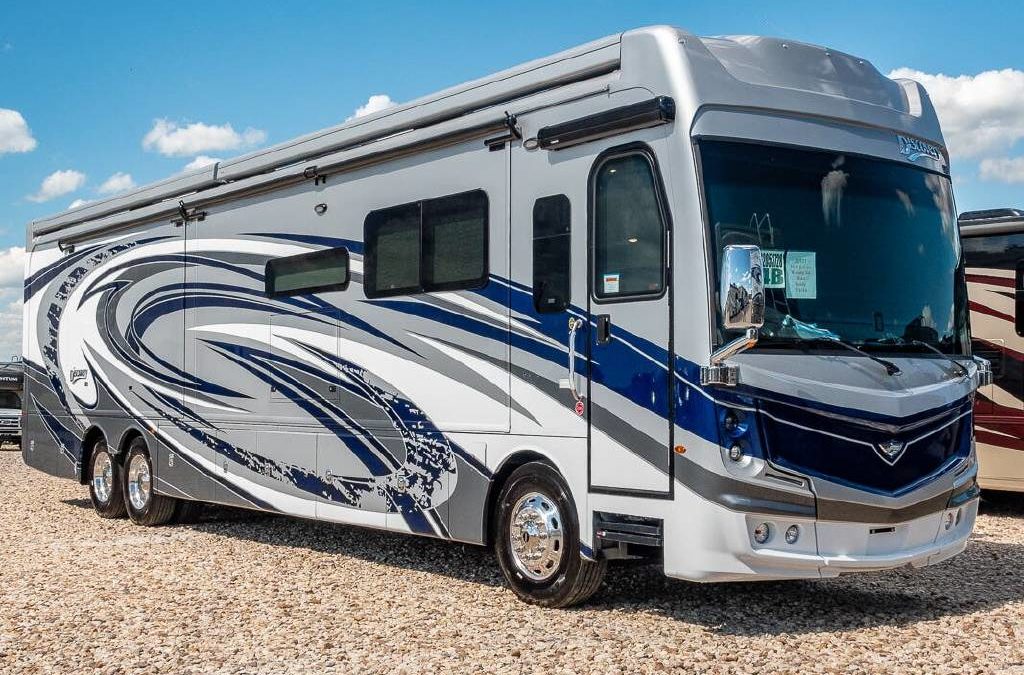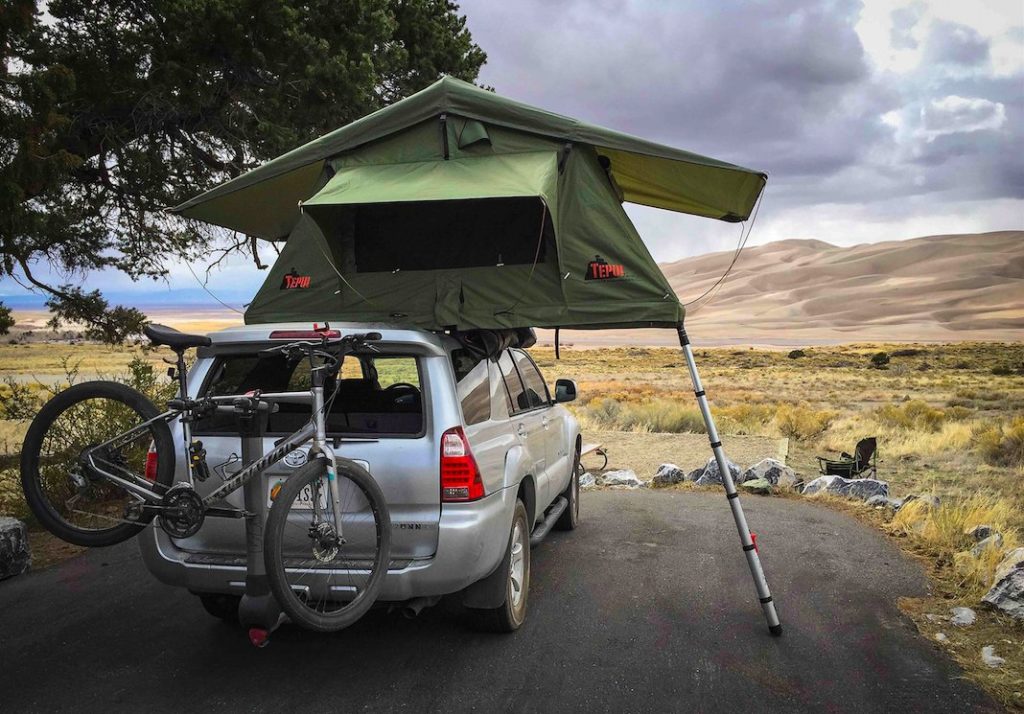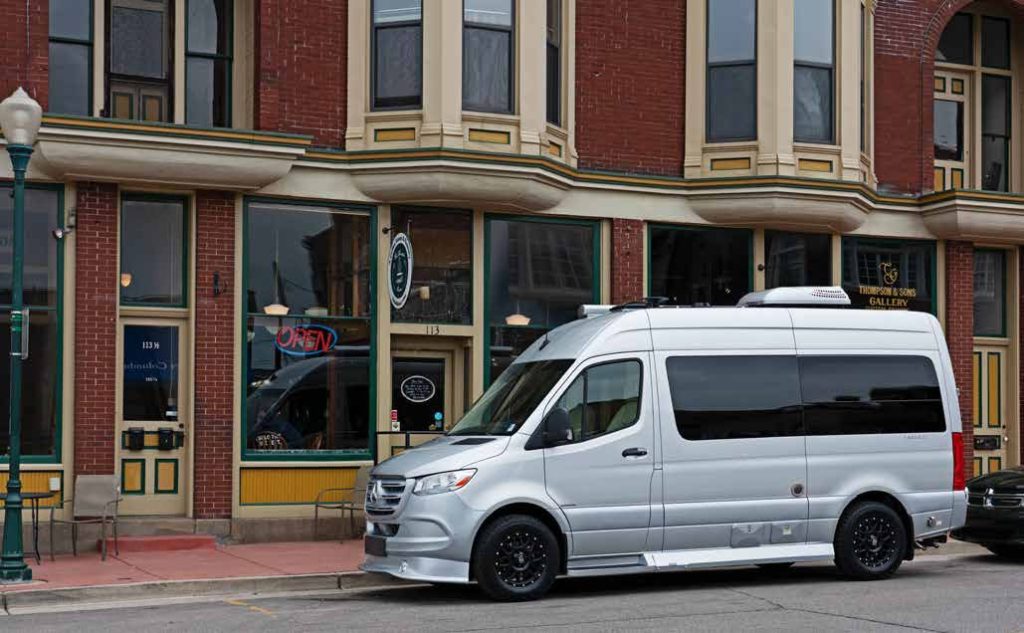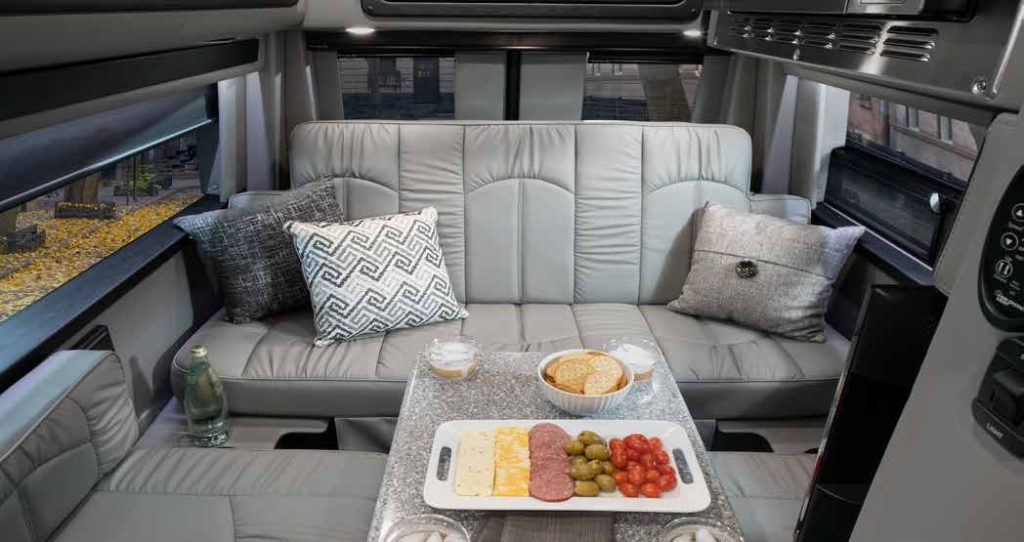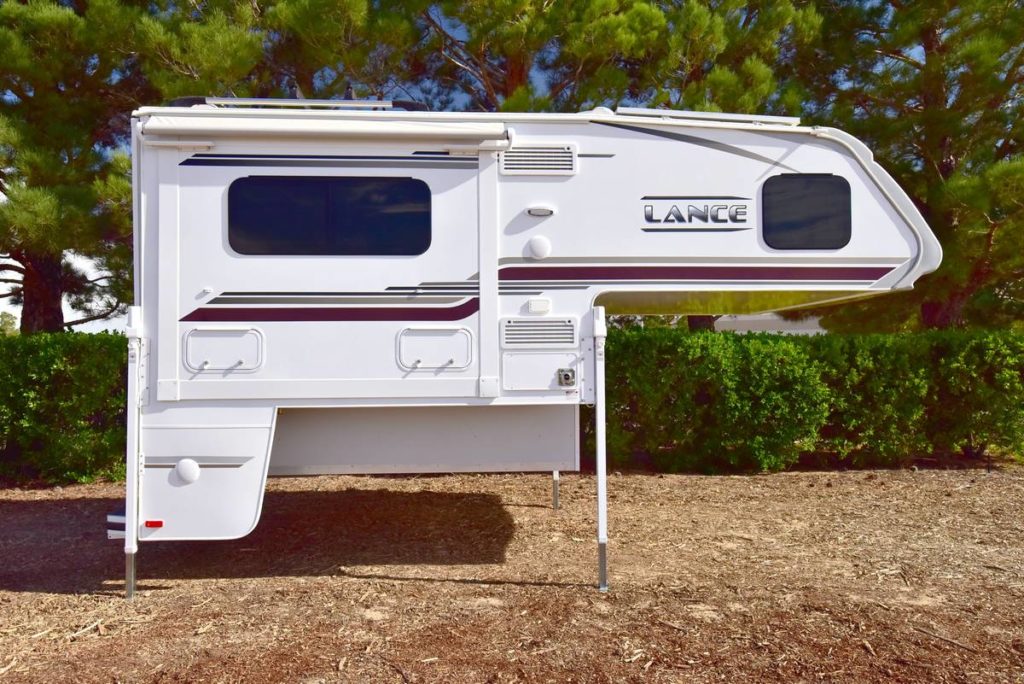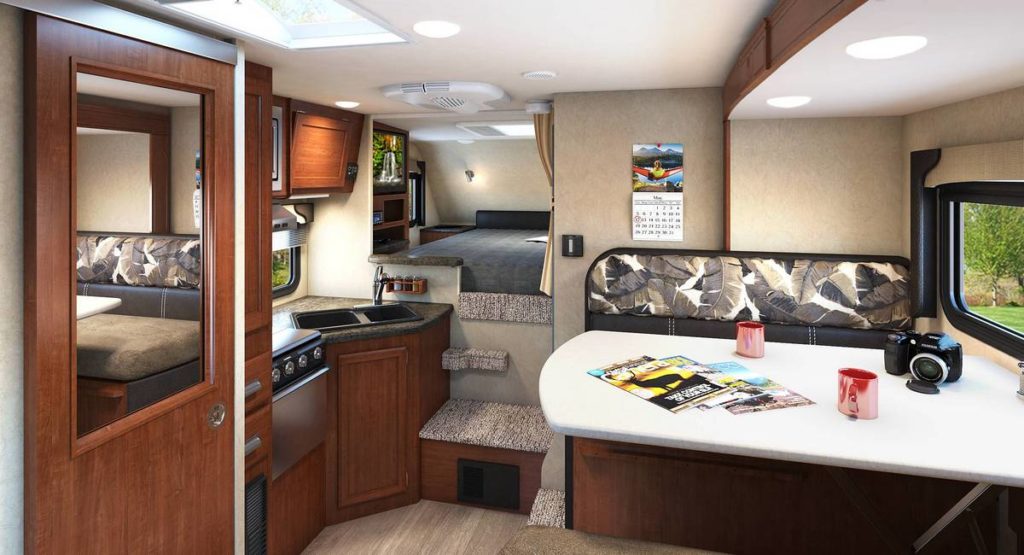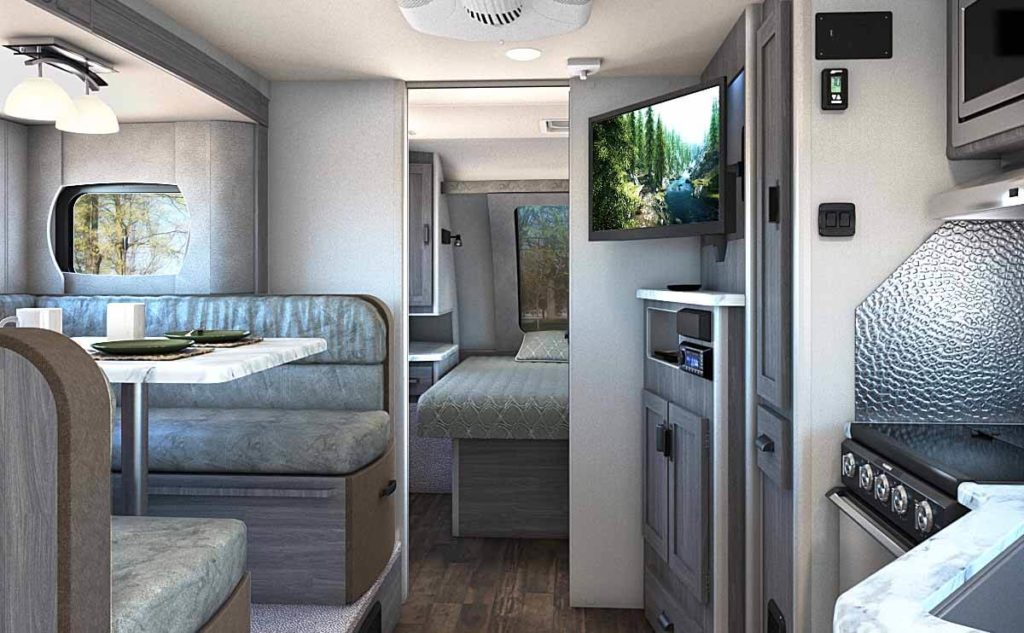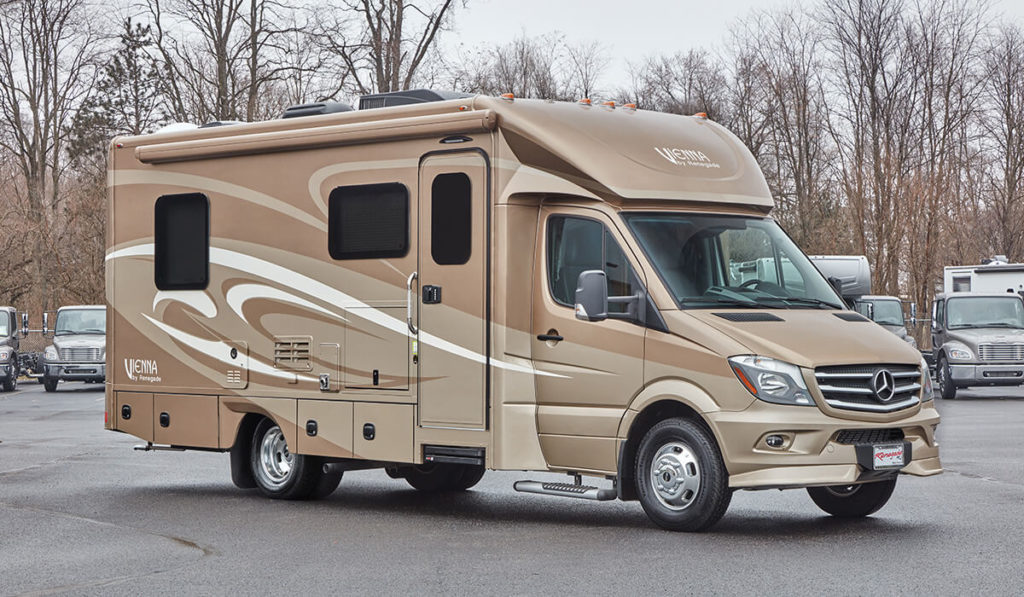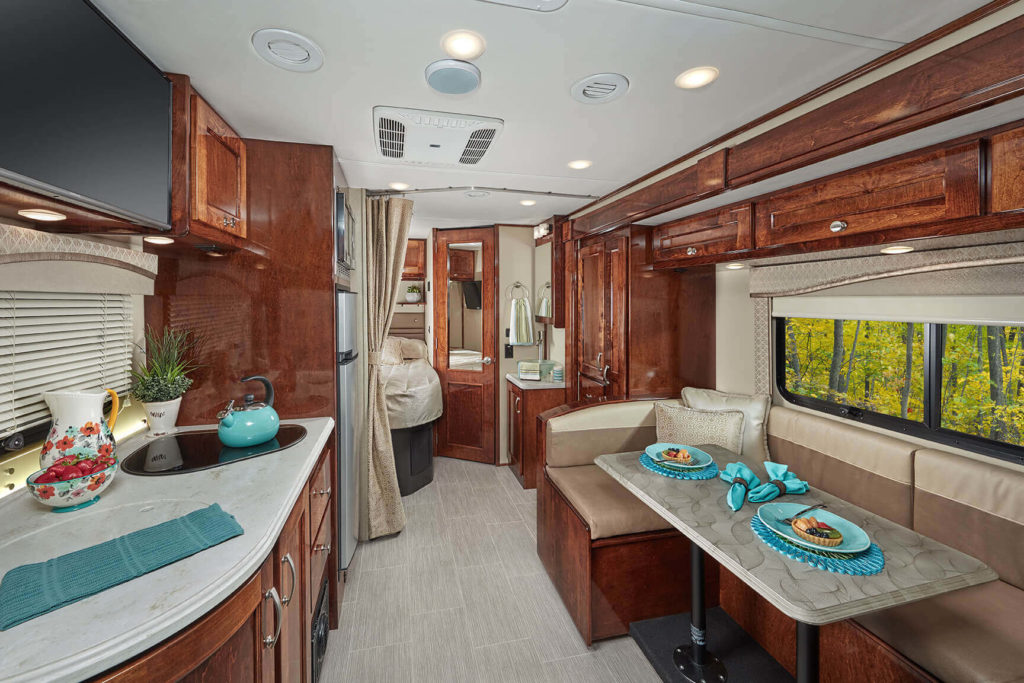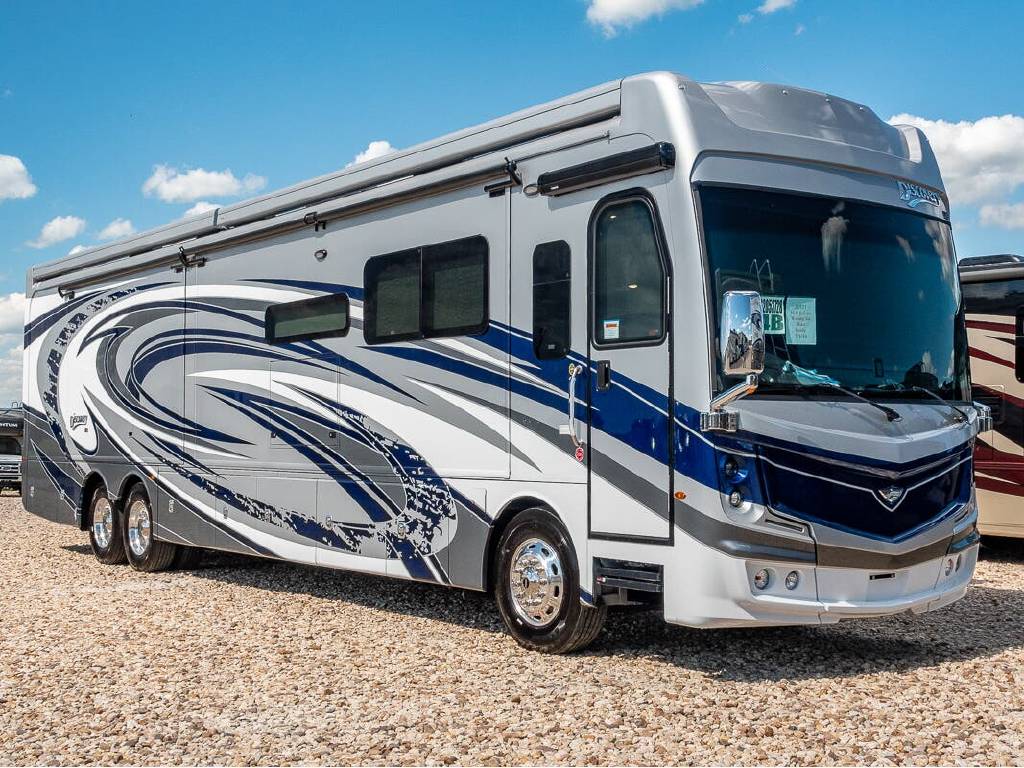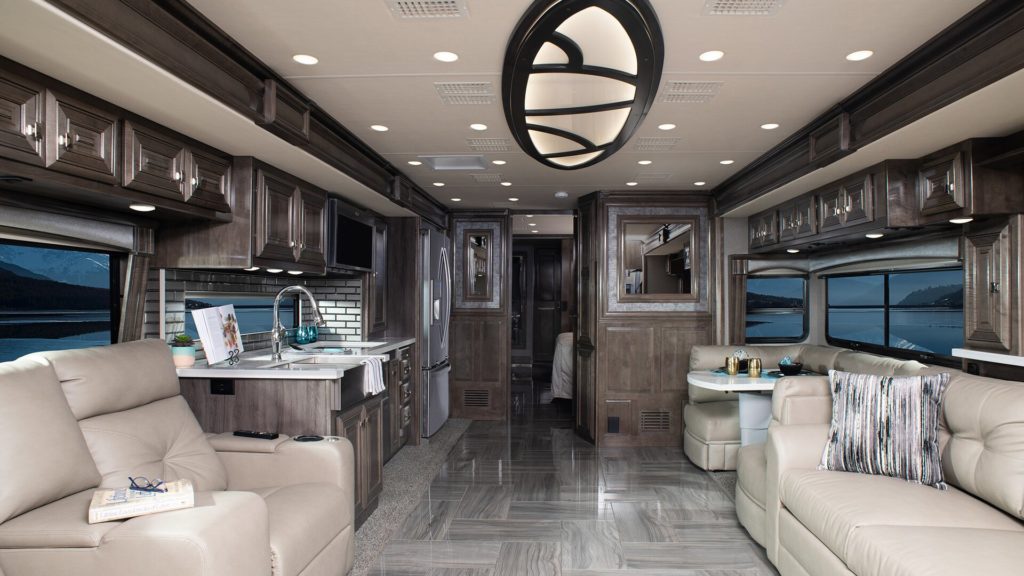**This is a guest post from Kahn Media**
With constant stress from the daily grind and endless email notifications demanding our attention, heading outdoors is the perfect way to disconnect and recharge. Whether it’s the thrill of an off-the-grid excursion or a road trip to a bucket-list national park, there are recreational vehicle options to fit every budget, level of experience and desire for adventure (or comfort). With everything from rooftop tents for your car that cost as little as $1,000 to ultra-luxurious motorhomes that cost well into six figures, it’s hard to know where to begin. This handy guide provides a basic understanding of what’s available so you can decide what’s right for you.
Rooftop Tents
If setting up a tent and sleeping on rocky, uneven ground has lost its appeal – or if you were never a fan in the first place – then a rooftop tent may be the way to go. Tents mounted on top of vehicles have been around for the better part of a century. Imagine a canvas tent atop a rugged Land Rover parked in the heart of the Serengeti, its intrepid campers perched safely above curious carnivores wandering into their campsite. These days, thanks to escape-fantasy photos on Instagram and the growing popularity of overlanding (traveling and camping off the beaten path, often in an off-highway-capable vehicle), there’s a wide variety of modern rooftop tents that fit on everything from a Toyota Prius to an oversized 4×4 rig and, depending on size, sleep up to four people. Prices range from about $1,000 to $3,000 or more, and established brands include iKamper, Tepui, Tuff Stuff and Yakima, among others.
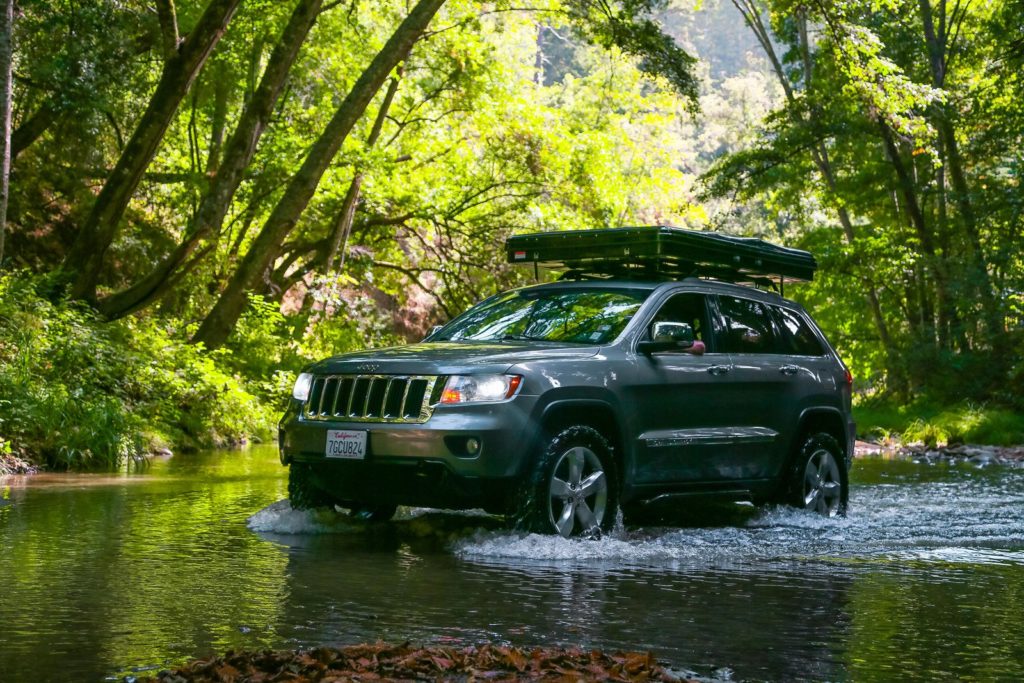
Rooftop tents offer many convenient options, such as supportive foam mattresses, awnings for shade and dedicated storage for gear. Because rooftop tents are mounted on the roof of a car, pickup truck, SUV or van, the vehicle typically needs a roof rack that’s sturdy enough to carry the weight of the tent as well as its occupants. Furthermore, because it’s affixed atop the vehicle during transit, a rooftop tent must be mounted securely enough to withstand wind resistance at highway speeds (which can have a negative effect on fuel economy, by the way).
There are several styles of rooftop tents, including soft-side, hard/clamshell and pop-up/flip-open. Soft-side and hard/clamshell tents are the easiest to use because they mount atop modular roof rack systems and can be added to or removed from vehicles with minimal difficulty, though they require campers to climb up or down a ladder when getting in or out of the tent. Pop-up tents, on the other hand, require extensive modification because they replace the vehicle’s roof. Because of the cost and commitment involved, they’re popular features of dedicated recreational vehicles like the iconic Volkswagen Westfalia camper van, which leads us to the next option.
Class B Camper Vans
The classification of motorhomes – that is, self-contained, self-propelled vehicles with living quarters – is a little confusing. Class A is the largest, Class B is the smallest and Class C is in between. Because they are built on a van chassis, Class B camper vans are the lightest and most maneuverable type of motorhome, making them easy to drive and park. As a dedicated recreational vehicle, a camper van can be kept stocked with gear and supplies so you can escape at a moment’s notice.
Most Class B camper vans provide the comforts and conveniences of home, including dining and kitchen facilities, sleeping quarters, a bathroom and ample storage. Because of their compact size, they make efficient, multipurpose use of space. Cushions used for couches and dinettes by day can be rearranged to create sleeping areas at night. Refrigerators, microwave ovens, running water, flushing toilets, satellite TVs and Wi-Fi are but a few of the features available on today’s camper vans.
Class B camper vans range from 15 to 25 feet in length, sleep up to four people and cost anywhere from $60,000 to $150,000. For example, the Passage 144 Sprinter RV Camper Van made by Midwest Automotive Designs, which is built on a Mercedes-Benz Sprinter van chassis with a diesel engine, is fully equipped with heat/air conditioning, a lithium-ion battery power system as well as a generator, two LED HD TVs and sleek, modern interior design.
Slide-In/Truck Bed Camper
If you’re like millions of Americans who already own a pickup truck, then a slide-in or truck bed camper provides many features of a Class B camper van in a more affordable, flexible package. Different configurations of slide-in campers are available for trucks with short or long beds as well as various payload capacities, and many have cab-over compartments that add space for additional sleepers or cargo. Built-in stabilizer legs can be deployed so the camper stands on its own, allowing the camper to remain at the campsite while the truck is used for exploration, or so it can be stored in a driveway or yard when not in use. Like Class B camper vans, modern truck campers can be fully equipped with a kitchen (including a stove, sink, refrigerator and microwave), a convertible seating/dining/sleeping area, a bathroom/shower and more.
Ranging in size from 8 to 20 feet, sleeping up to six adults and priced from as little as $6,000 to $50,000 or more, there’s a slide-in camper to fit every need and budget. Keep in mind that the total weight of the camper and its contents should fall within the allowable load capacity of your pickup truck; in some cases, heavier-duty suspension is required. Lance makes a full range of truck campers, from the Lance 650 short-bed model with an interior floor length of nearly seven feet and a dry weight of 1,700 pounds, to the Lance 1172 long-bed model, which has a floor length of nearly 12 feet, a dry weight of 4,174 pounds and two slide-outs that expand the usable interior space when parked. In the middle is the versatile Lance 855s short-bed model with a single slide-out, which was used on Lance’s “Altimeter” concept camper, a customized Ford F-350 4×4 that was ranked No. 2 on the “Top 11 Expedition Truck Campers of the 2019 Overland Expo” list. The Altimeter has attracted so much attention that Lance is now evaluating a production version.
Travel Trailers
If owning a dedicated vehicle for vacationing is not an option, then a travel trailer may be the solution. Just as there are different classes of motorhomes, travel trailers come in dozens of shapes, sizes and configurations to suit the diverse needs of recreational users. Most are portable living quarters towed behind a vehicle, while others known as “toy haulers” combine living space with a garage for transporting ATVs, motorcycles or side-by-sides. Travel trailers offer the convenience of being parked at a campsite so the tow vehicle can be used for transportation to your favorite fishing hole or hiking trail.
Important considerations when looking at travel trailers are the towing capacity of your car, truck or SUV. Travel trailers come in a range of styles, from lightweight tent trailers that can be towed behind a car to enormous dual-axle trailers that require a heavy-duty tow vehicle. Lengths range from eight to 40 feet, sleeping accommodations range from one to 10 people and prices range from $6,000 to $160,000 or more. In addition to truck campers, Lance makes a full line of travel trailers. The Lance 1475 has an interior floor length of nearly 15 feet and a gross vehicle weight (GVWR) of 3,700 pounds, making it suitable for many SUVs and minivans. At the top of the line is the Lance 2465, a dual-axle model with an interior length of nearly 25 feet, two slide-outs and a king-size bed. With a GVWR of 7,800 pounds, it requires a heavy-duty tow vehicle such as a full-size pickup truck.
Keep in mind that driving a vehicle while towing a trailer requires skill and situational awareness, especially when backing up or maneuvering in tight spaces such as gas stations, parking lots and campgrounds. The added weight of the trailer limits acceleration and the ability to brake or swerve quickly. But with an appropriate vehicle and some practice, you’ll become a trailer towing pro in no time and have a comfortable base for your outdoor adventures.
Class C Motorhomes
Like Class B motorhomes, those designated Class C are also built on a van chassis and retain the original cab section. But they have a wider body section and an over-the-cab sleeping/cargo area like a truck bed camper. Because of their larger, purpose-built bodies, Class C motorhomes are typically larger, heavier and more expensive than their Class B counterparts. (Remember, in the world of RVs, the largest motorhomes are Class A, followed by Class C then Class B.) For those who want a dedicated recreational vehicle, they offer more living space, more creature comforts and a wider range of configurations than a Class B. They range in length from 20 to 35 feet, sleep as many as eight and cost anywhere from $40,000 to $200,000 or more.
An example of a Class B motorhome is the Renegade Vienna, which is built on a Mercedes-Benz Sprinter 3500 chassis with a turbo diesel engine. Available in multiple configurations, the Vienna has a slide-out that expands both the dining and sleeping areas and is well-appointed for luxurious living on the road or at a campground or RV park.
Class A Motorhome
Purpose-built from the ground up, Class A motorhomes are the ultimate in dedicated recreational vehicles. Distinguished by their boxy appearance, they most closely resemble a small house on wheels. Ranging from 20 to 40 feet in length, Class A motorhomes may be the same length or shorter than some Class C motorhomes, but they maximize living space. For example, by swiveling around the driver and passenger captain’s chairs, the front cab becomes part of the main living area. And some Class A motorhomes have multiple slide-outs, greatly expanding the available interior space for cooking, dining, socializing and sleeping. A full master’s suite and a bathroom with a tub/shower, a toilet and a vanity area are common features. Pricing starts around $60,000, but the sky truly is the limit – the most luxurious Class A motorhomes cost more than half a million dollars.
One of the primary distinctions among Class A motorhomes is whether it’s built on a specialized chassis and powered by a heavy-duty gas engine or built on a bus chassis with a diesel engine mounted in the back, which is called a “diesel pusher.” Class A motorhomes, especially those with high-torque diesel engines, can also be used to tow an extra vehicle, boat or trailer.
Fleetwood RV makes a range of Class A motorhomes that can be customized with different interior materials, wood colors and appliance options. Its gas-powered Bounder model, which is one of the best-selling RV of all time, offers the ultimate in flexibility. Five floorplans and two slide-outs offer a king-size bed in the master suite, one or two bathrooms and options such as bunkbeds for the kids or a fold-down patio. The Discovery XLE Freedom Bridge is Fleetwood’s top-of-the-line diesel model with five floorplans, four slide-outs and every comfort of home, including a king-size bed, two bathrooms, a full kitchen with a dishwasher, a washer/dryer and a fireplace.
Get Out There
Regardless of how comfortable or off-the-grid you want to be, there’s a tent, camper or recreational vehicle to meet your needs. Figure out what your intended usage will be, how much you’re willing to spend and how many people will be traveling with you. Then decide whether you’ll be using your existing vehicle, buying a pickup or tow vehicle or buying a dedicated recreational vehicle. Finally, make an honest assessment of your driving skills, the type of terrain you’ll be traveling on and where you’ll store the RV or trailer when not in use. Before making a commitment, consider renting different types of recreational vehicle to figure out what you like and don’t like. And if buying new is not within your budget, there’s a thriving used market for recreational vehicles and equipment. No matter what you choose to do, just get out there and enjoy the great outdoors.

